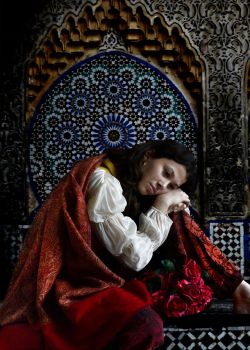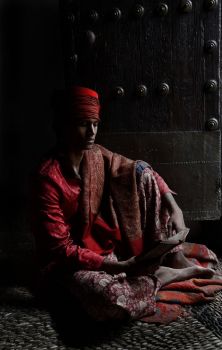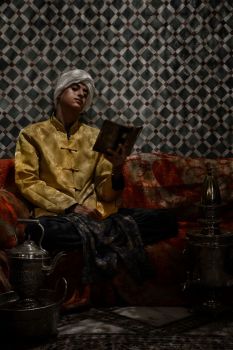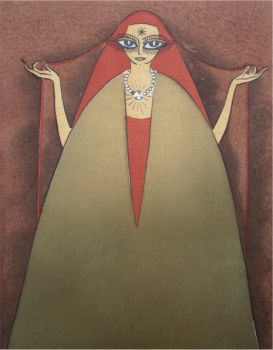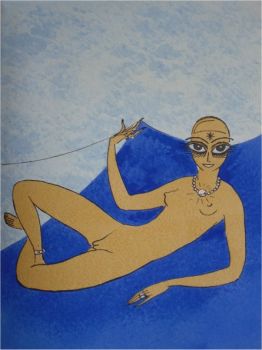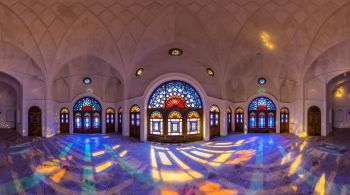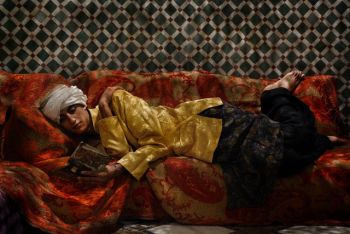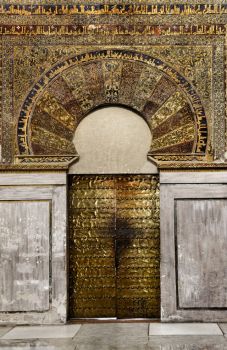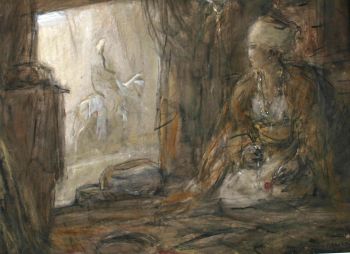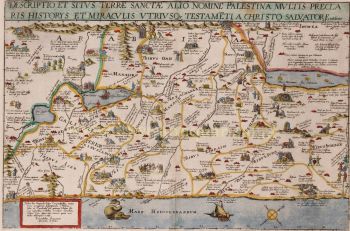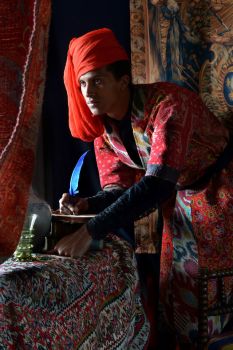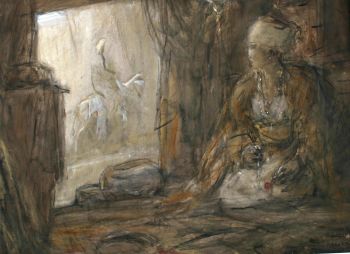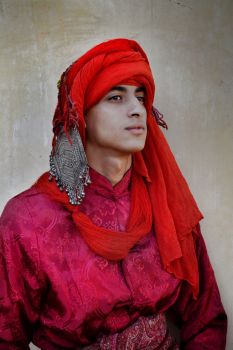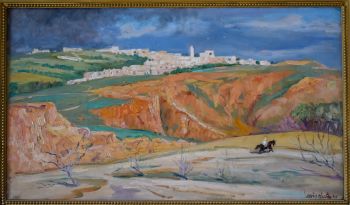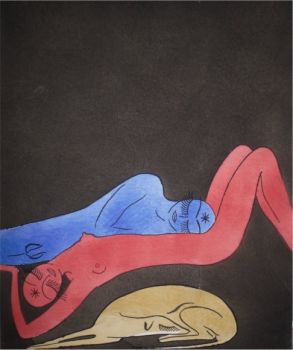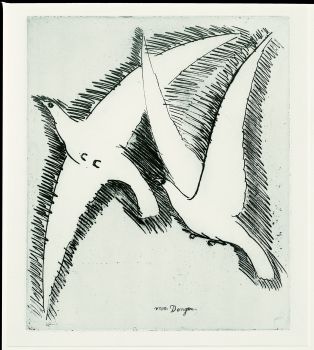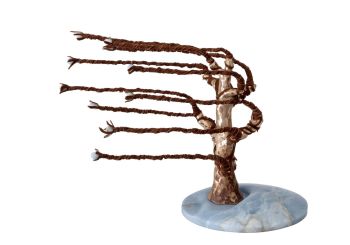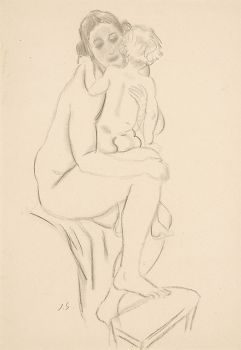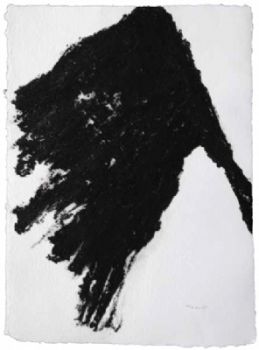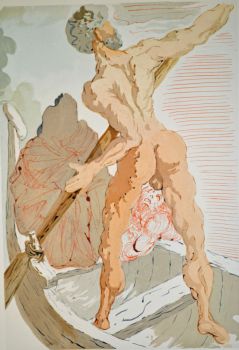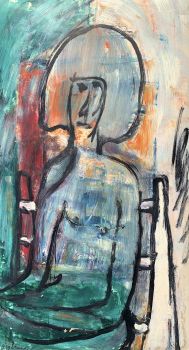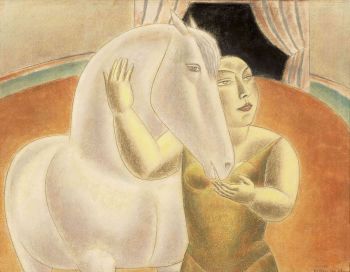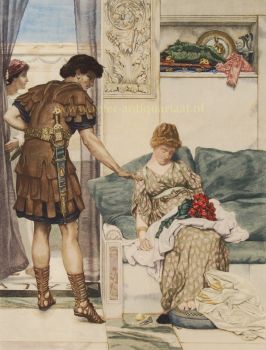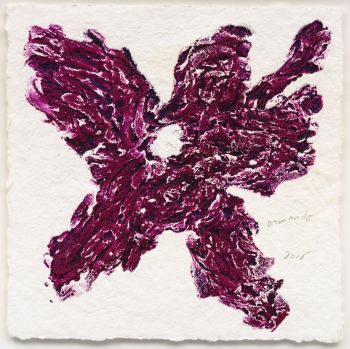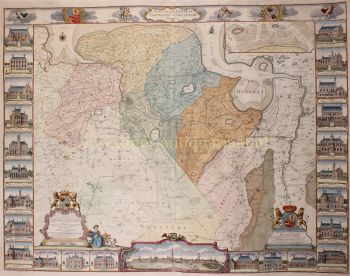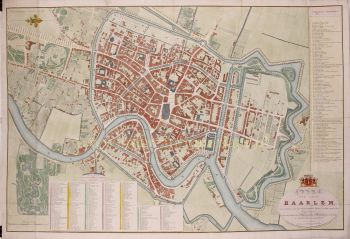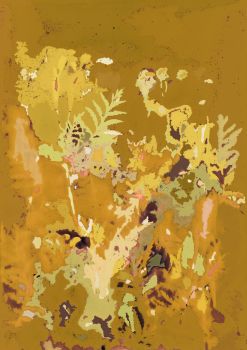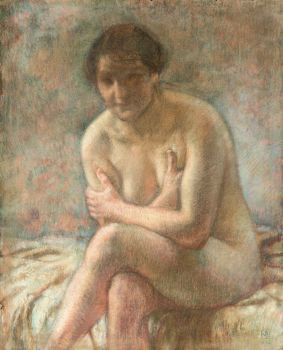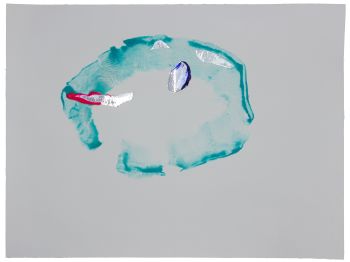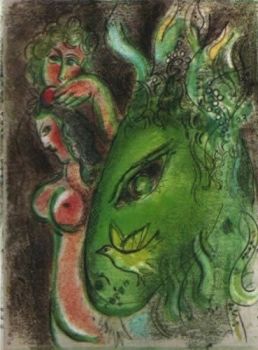Printed and bound at the first Arabic printing office in Lebanon 1776
Monastery of Saint John the Baptist at Dayr al-Shuwayr
PapierCuir
Actuellement indisponible via Gallerease
- Sur l'oeuvre d'artKitab al-Injil al-sharif al-tahir wa-al-misbah al-munir al-zahir muqassaman kanayisiyan madar al-sanah hasaba tartib al-Anba al-Qiddisiyin al-Sharqiyin [= Book of the liturgical Gospels].
Dayr al-Shuwayr (or Dhour el Choueir, in Lebanon), Dayr Mar Yuhanna [= Monastery of Saint John the Baptist], [1776]. Folio (31.5 x 22.5 cm). A Greek Melkite Evangeliary in Arabic, with each page in a border of thick-thin rules, pp. 245-300 printed in red and black, and a woodcut Madonna and child. The title-page has been sophisticated, probably in the 18th-century, and appears to be a badly inked proof that has been touched up in manuscript. Bound by the Dayr al-Shuwayr Monastery in contemporary gold- and blind-tooled reddish-brown goatskin morocco, each board with a gold centrepiece.
Very rare second Arabic edition (the first to be printed in Lebanon) of the four Gospels arranged for liturgical use in the Greek Melkite Church, to make readings for services according to the day of the year: a so-called Evangeliary or Evangelion. It was intended primarily for Arabic-speaking Christians in the Middle East, rather than for missionary work. The first Arabic edition was printed and published at Aleppo in 1706. Al-Shamas Abdallah Zakher (1684-1748), son of an Aleppo goldsmith, worked at the Aleppo printing office but had to flee in 1722 because of disputes that were to lead to the 1724 schism in the Melkite Church. Zakher established the printing office of the Melkite monastery of St. John the Baptist at Dayr al-Shuwayr in the Lebanese Kisrawan mountains, where he produced a psalter in 1734. He is said to have been skilled in jewelry-making and cutting in metal and wood, and to have cut the punches for the 1734 Arabic type. The printing office produced about 70 Arabic editions before it closed in 1899.
With marginal manuscript notes in Arabic script, the stamp of a Diyarbakir (in Anatolia, eastern Turkey) library in the margin of the last page. With the title-page sophisticated as noted, some mostly marginal water stains, an occasional small stain, a tiny and unobtrusive worm hole in the second half, but mostly in good condition and with large margins. The binding rubbed and slightly chipped, with the front hinge and fore-edge corners restored and the inside front hinge reinforced. Very rare early example of an Arabic liturgical work, printed and bound at the Monastery of St John the Baptist in Dayr al-Shuwayr, Lebanon.
Darlow & Moule 1661; KVK & WorldCat (3 copies); Schnurrer 360; for Zakher: J.E. Kahale, Abdallah Zakher (2000); Hanebutt-Benz et al., Middle Eastern languages and the print revolution (2002), pp. 179-181. - Sur l'artisteL'Ordre Basilien Chouérite de Saint-Jean-Baptiste est un ordre religieux de l'Église gréco-catholique melkite. Le nom latin de cet ordre est Ordo Basilianus Sancti Iohannis Baptistae, le nom français est Ordre Basilien Chouerite de Saint Jean Baptiste, l'abréviation utilisée après le nom est B.C. Cet ordre fut retrouvé en 1696 par cinq moines (dont Néophytos Nasri) qui quittèrent le monastère de Balamand pour chercher un endroit calme où mieux suivre la règle de Saint Basile. Ils se sont installés en 1710 dans le village de Choueir (ou Dhour El Shuwayr, près de Khinchara) au Mont-Liban en utilisant la petite église de Saint Jean-Baptiste, dont ils ont pris le nom et qui est toujours leur maison mère En 1733, Abdallah Zakher a mis en place un Presse à imprimer en langue arabe utilisant des caractères mobiles au monastère de Saint-Jean à Choueir, la première presse artisanale au Liban. [4] En 1757, le pape Benoît XIV approuva leurs règles particulières et l'approbation finale de Rome fut donnée en 1772. L'Ordre basilien salvatorien devint bientôt l'un des deux principaux ordres religieux de l'Église catholique melkite. L'autre ordre était l'Ordre Basilien Salvatorien. Selon leur tradition, l'Ordre Basilien Salvatorien avait une visée plus missionnaire, tandis que l'Ordre Chouerite Basilien était plus contemplatif. L'Ordre Basilien Salvatorien recrutait dans les régions de Damas et du Sud-Liban, tandis que l'Ordre Basilien Chouerite recrutait dans les régions d'Alep, de Homs, du Nord-Liban et de la Galilée. Les tentatives d'unir ces deux ordres au XVIIIe siècle ont échoué: l'opposition entre eux et entre les différentes communautés dont ils recrutent des membres est un aspect important à comprendre dans l'histoire des débuts de l'Église catholique melkite. Entre 1824 et 1832, l'ordre s'est scindé en deux branches: l'Ordre Basilien Alepien (formé principalement par des moines venus de la région d'Alep), et les Baladites ou l'Ordre Basilien Chouerite (qui venaient principalement du Liban et de Galilée). L'ordre a fondé son séminaire en 1880 et gère de nombreuses paroisses au Moyen-Orient. Trois patriarches melkites et environ 36 évêques étaient membres des Chouérites basiliens. La première édition arabe fut imprimée et publiée à Alep en 1706. Al-Shamas Abdallah Zakher (1684-1748), fils d'un orfèvre d'Alep, travailla à l'imprimerie d'Alep mais dut fuir en 1722 en raison de conflits qui allaient conduire à le schisme de 1724 dans l'Église melkite. Zakher a établi le bureau d'impression du monastère melkite de Saint-Jean-Baptiste à Dayr al-Shuwayr dans les montagnes libanaises de Kisrawan, où il a produit un psautier en 1734. Il aurait été qualifié dans la fabrication de bijoux et la coupe du métal et bois, et d'avoir coupé les poinçons pour le type arabe 1734. L'imprimerie a produit environ 70 éditions arabes avant de fermer en 1899.
Artwork details
Related artworks
Tilmanus Nicolaus Maastricht
Missale Romanum avec montures en argent hollandais1788 - 1792
Prix sur demandeJacob J. Roosjen SRI
Antonie Derkinderen
Memory book Exhibition of Dutch Painting1892
Prix sur demandeKunsthandel Pygmalion
Engelbert Kaempfer
LIVRE ENGELBERT KAEMPFER1651 - 1716
Prix sur demandeZebregs & Röell - Fine Art - Antiques
Antonie Derkinderen
Memory book Exhibition of Dutch Painting1892
Prix sur demandeKunsthandel Pygmalion
Tilmanus Nicolaus Maastricht
Missale Romanum avec montures en argent hollandais1788 - 1792
Prix sur demandeJacob J. Roosjen SRI
LAWRENCE WEINER
"SKIMMING THE WATER [MENAGE A QUATRE]" Signed book plus small artwork2010 - 2014
Prix sur demandeGallerease Selected
Hermann Nitsch
"UNDER MY SKIN" Signed book incl. small artwork and DVD in a matching box2010 - 2014
Prix sur demandeGallerease Selected
Engelbert Kaempfer
LIVRE ENGELBERT KAEMPFER1651 - 1716
Prix sur demandeZebregs & Röell - Fine Art - Antiques
Yoko Ono
YOKO ONO: "ARISING" SIGNED BOOK PLUS SMALL ARTWORK 2010 - 2014
Prix sur demandeGallerease Selected
1 - 4 / 22Elisabeth Treskow
Lapis lazuli afghan incrusté d'or sur un support en argent1950 - 1960
Prix sur demandeJacob J. Roosjen SRI
Artiste Inconnu
GRANDE PEINTURE INDIENNE IMPORTANTE ET RARE `` STYLE D'ENTREPRISE '' SUR IVOIRE REPRÉSENTANT UN DÉFI1850 - 1900
Prix sur demandeZebregs & Röell - Fine Art - Antiques
 Sélectionné par
Sélectionné parDanny Bree
1 - 4 / 24- 1 - 4 / 24

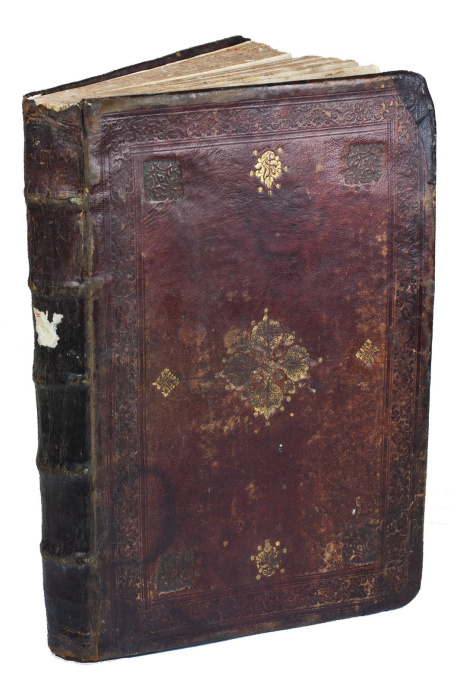






!["SKIMMING THE WATER [MENAGE A QUATRE]" Signed book plus small artwork by LAWRENCE WEINER](https://media-2.gallerease.com/images/442bfd5f-fc31-4e18-a2fa-ee0c08eade64/350x350/skimming-the-water-menage-a-quatre-signed-book-plus-small-artwork.jpg)










